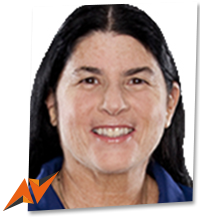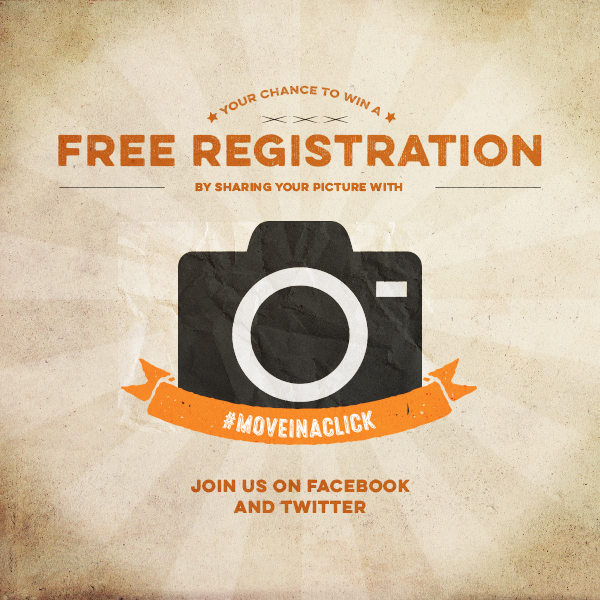
Interview with Dr. Jayne Greenberg, US President’s Council on Fitness, Sports and Nutrition
Dr. Jayne Greenberg made her popular debut as a keynote speaker at the MOVE Congress 2013, sharing valuable insights from her role as a member of the US President’s Council on Fitness, Sports and Nutrition. Greenberg returns to the MOVE Congress this year to delve deeper into the concept of “Active Schools” in an interactive workshop that will bring speakers and participants together like never before.
One of the President’s Council on Fitness, Sports and Nutrition’s aims is to reverse overweight and obesity trends among American school children. It is no easy feat to tackle obesity in one of the world’s most populated countries, where the levels have risen to a staggering 18-21% of children aged between 6 and 19, according to the American-based Centers for Disease Control and Prevention. But Greenberg and her colleagues, backed by First Lady Michelle Obama, are taking a multi-strand approach (called Let’s Move!) to get schools, child care centres, religious and indigenous communities and other groups involved in enhancing children’s physical wellbeing.
We spoke to Greenberg about Let’s Move!, her thoughts on reversing the trend of obesity among children and teenagers, the crucial actors who need to make it happen and why she is eager to return to the MOVE Congress.
Read the full interview below and click here to find out how the MOVE Congress 2014 is taking an innovative approach to traditional conference formats like plenary sessions and workshops. What better way to hold a workshop on effective collaboration between sectors than to use the opportunity in front of us to start working with the experts? Will you be part of the group? Register today and get ready to have your say in October!
Q. How do we need to promote (and to whom) the importance of motivating children to be active, whether through organised sports or general physical activity in the playground, park or backyard? Who are the main actors here?
A. We need to start by going to where the kids are; where they learn, play and live. Schools play a vital role in increasing physical activity levels as students spend an average of 7-8 hours a day in school. It is possible for children to reach the recommended 60 minutes or more daily physical activity by using the school environment, before, during, and after school. This can be accomplished by active walking or biking to school, daily physical education, physical activity classroom breaks, and sport or intramural activities after school.
Additionally, parents play a critical role in instilling the importance of physical activity and a healthy lifestyle in their children, both by modelling active behaviours and by providing supervised opportunities for their children to be physically active. Sport, whether it’s played informally in the family backyard, organised in an open green space, or organised through parks, recreation centres and youth sport leagues, further enhances the child’s opportunities to be physically active while developing keener skills for those interested in pursuing sport at a higher level of competition. Regardless of the avenue provided, the major objective is to motivate youth to have fun while being physically active in age appropriate activities.
Q. By age 15, American kids tend to be 75% less physically active then they were at age 9. Why do you think this is so and how can we turn this statistic around?
A. There is a barrage of reasons why physical activity levels drop as youth progress into their teenage years. These include social, cultural, socioeconomic and various aspects of perception, such as body image and stereotyping. However, regardless of the reasons, the key is to increase equitable access to physical activity opportunities through a convergence of strategies. These could include increasing non-competitive activities for disengaged youth, offering cultural relevant activities and eliminating the barriers involved in pay to play situations which would level the socioeconomic playing field. By fostering a culture of physical activity and opportunities to be physically active, I firmly believe that we can reverse the trend of physical inactivity, or sedentary youth, and change the statistics.
Q. What is “Let’s Move!”?
A. Let’s Move! is a comprehensive initiative, launched by the First Lady, dedicated to solving the problem of obesity within a generation, so that children born today will grow up healthier and able to pursue their dreams. From the initial launch of Let’s Move came the emergence of various programs to mobilise specific sectors of society to meet the aforementioned goal: getting youth moving.
These sectors have included Let’s Move! Cities, Towns and Counties, which engages local electives in building infrastructure leading to healthy communities; Let’s Move Faith and Communities, which assists faith-based and neighbourhood organisations in promoting and making a commitment to building active communities; Let’s Move Outside, which encourages families to take advantage of the great American outdoors including local, state and national parks; Let’s Move Museums and Gardens, which is a national initiative providing opportunities for millions of museum and garden visitors to learn about healthy food choices and physical activity through interactive exhibitions, children’s afterschool and summer programs and healthy food service; Let’s Move! In Indian Country, which seeks to improve the health of the American Indian and Alaska Native children; Let’s Move! Child Care, which empowers child care and early education providers to get kids off to a healthy start; and, of course, Let’s Move! Active Schools, which is a comprehensive program that empowers school champions to create active environments that enable all students to get moving and reach their full potential.
Q. What are your expectations for the MOVE Congress 2014?
A. I attended my first MOVE Congress in 2013 and left in awe of the contacts I made and the programmes and knowledge shared by all participants. The networking continued long after the Congress ended and the common interests shown in getting the world to MOVE more were invigorating. I am looking forward to learning more, collaborating more and expanding opportunities through this global initiative!
For more information on Let’s Move! please visit https://www.letsmove.gov
Up close with the experts – MOVE Congress workshops bring bright minds together
Interview with Dr. Jayne Greenberg, US President’s Council on Fitness, Sports and Nutrition Dr. Jayne Greenberg made her popular debut as a keynote speaker at the MOVE Congress 2013, sharing valuable insights from her role as a member of the US President’s Council on Fitness, Sports and Nutrition. Greenberg returns to the MOVE Congress this year to delve deeper into the concept of “Active Schools” in an interactive workshop that will bring speakers and participants together like never before. One of the
Free Registration!
Share a photo with the #MOVEINACLICK for your chance to win! The MOVE Congress 2014 organisers are giving you the chance to be rewarded for your creativity and win free registration for this year’s event in Rome from 22-25 October. All you have to do is share a picture on Twitter or Facebook with the #MOVEINACLICK that you think represents “sport for all”. Sport for all is a concept that has different shades. Is it club sports? Is it exercise that you organise yourself, like
Mixing traditional and innovative methods
The aim of the MOVE Congress 2014 is to promote communication and interaction among participants, speakers and moderators by using a blend of traditional and innovative methods and techniques such as: Keynote speeches (2): Open City – Active City from an urban and a social perspective The morning plenary of the MOVE Congress 2014 will capture the essence of the Congress theme, Open City – Active City, from two different perspectives: urban planning and social aspects such as health and schooling. Our keynote
Welcome message from the Mayor of Rome
BY IGNAZIO R. MARINO, MAYOR OF ROME Rome is proud to host the 2014 edition of the MOVE Congress. Organised by the International Sport and Culture Association and UISP (Italian Sport for All Association), this unique initiative will gather organisations and individuals from around the world, who have a shared interest in sport for all, in the Italian capital. The practice of sport and physical activity is as ancient as the city of Rome itself, as civilisations have progressed using movement both for

